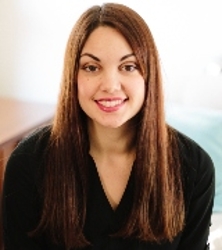Research
Contact
Communications Specialist
Faculty of Engineering
Spencer Engineering Building
Room 2072
Western University
Tel: 519-661-2111 ext. 87015
Email: engineeringcomms@uwo.ca
The Engineer's Impact - Emily Lalone
Your inside look at faculty’s research and its effect on society
In this new Q&A series, we’ll feature Western Engineering faculty members to gain a succinct overview of their research, understand its impact on society, and discover intriguing little-known facts.
Meet Mechanical and Materials Engineering Assistant Professor Emily Lalone.
Can you describe your research?
My research focuses on human body biomechanics, exclusively in the hand and upper limb. In my lab, we study how the joints in the human body (from shoulder to fingertip) move when people are at work, rest and play. A restriction in the movement of the hand may result in loss of function and quality of life. What is challenging however is that biomechanical studies investigating the hand and upper limb are limited and are difficult to conduct. We use a variety of tools including medical imaging (computed tomography, ultrasound, x-ray) and camera-based motion capture to understand how the joints move together to move the hand around in space. We can also use these tools to understand how injury/disease impairs normal function and help us develop new strategies to regain function after injury or in patients with disease. My lab is highly transdisciplinary and requires expertise in Biomedical and Mechanical Engineering, Medical Imaging, Orthopedic Surgery and Rehabilitation.
How does your research impact society in everyday life?
Upper extremity disorders (hand and upper limb) are a major problem in modern society. One third of all acute injuries seen in the ER involve the upper extremity and one quarter of all athletic injuries involve the hand/wrist. Not only does limitations in function have a huge impact on patients themselves but work-related musculoskeletal disorders can result in a high compensation cost and many lost workdays. By developing new diagnostic tools and treatment technologies, my research group hopes to improve health and quality of life. We strive to significantly contribute to the creation of safer and more appropriate clinical practice guidelines to prevent chronic musculoskeletal dysfunction, pain and disability.
What’s an interesting, little-known fact related to your research?
Fingers do not have muscles yet they are very strong - strong enough for some people to climb vertical surfaces supporting their entire weight using only a few fingers!

